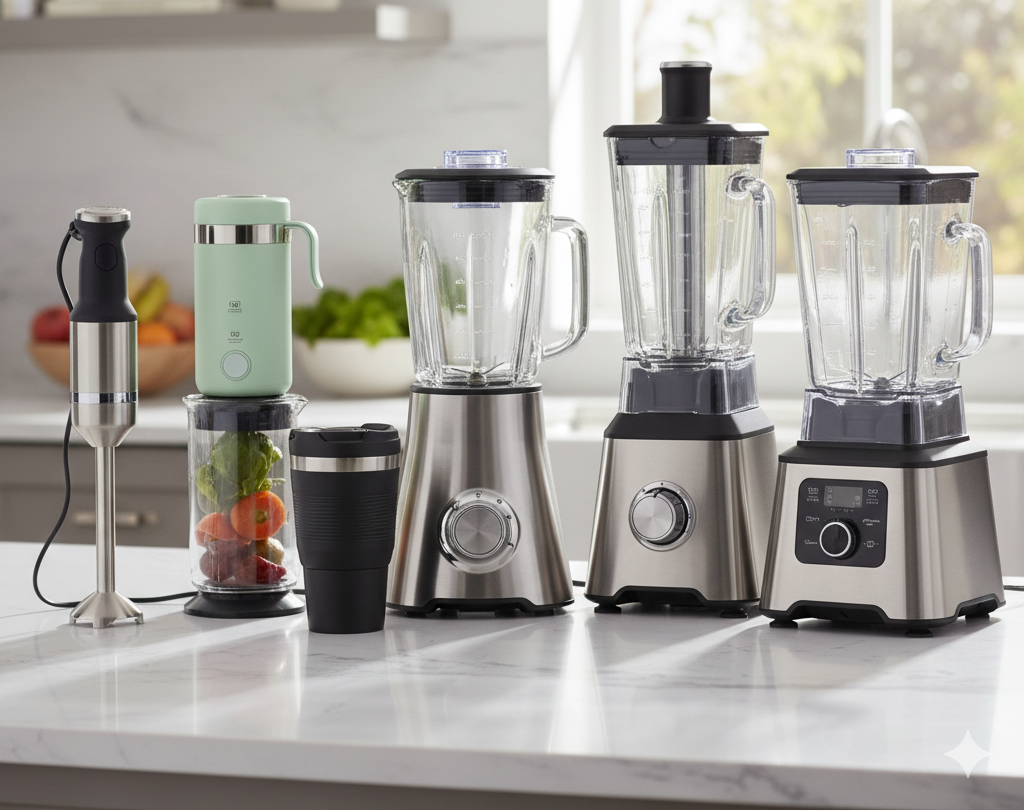Whether you’re making smoothies, blending soups, or preparing your favorite sauces at home, the right blender can completely change your kitchen experience. With so many styles and features available, though, the choice can feel overwhelming, and it can be hard to know which one fits your needs best.
This article walks you through the most common types of blenders, outlining the key benefits and drawbacks of each model to help you find the perfect match for your cooking routine.
Countertop Blenders
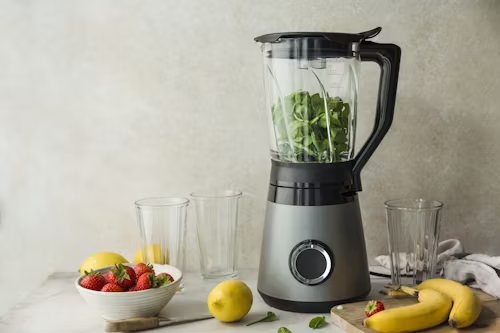
Countertop blenders are the traditional, full-sized models you probably picture when you think of a blender. They usually come with a sturdy motor base and a large pitcher made from glass or plastic. Most models offer multiple speed settings and preset functions for blending, pureeing, or crushing ice.
These blenders are the go-to option for most households. Countertop blenders can handle a wide range of tasks – from making smoothies and milkshakes to soups, sauces, or frozen drinks. Some even include removable lids or small openings that let you add ingredients while blending, giving you more control over texture and consistency.
Price Range
$50–$300
Features To Expect
Multiple speed settings, pulse function, sturdy glass or BPA-free pitchers, dishwasher-safe parts, and spill-proof lids.
Personal Blenders

Personal blenders are compact, single-serve blenders built for convenience. They’re perfect for quick tasks like smoothies, protein shakes or small batches of sauce. The blending jar typically doubles as a to-go cup – just swap out the blade for a lid and you’re ready to leave the house.
They’re ideal for anyone who wants quick, simple blending with minimal cleanup, or for those with limited counter space who don’t need a large-capacity machine. However, due to their smaller size and lower power, personal blenders can struggle with harder ingredients like frozen fruit or ice cubes unless specifically designed for it.
Price Range
$20–$100
Features To Expect
One or two-speed settings, blending cups with travel lids, dishwasher-safe parts, moderate motor power (200–600W), and compact bases for easy storage.
Immersion Blenders (Stick Blenders)
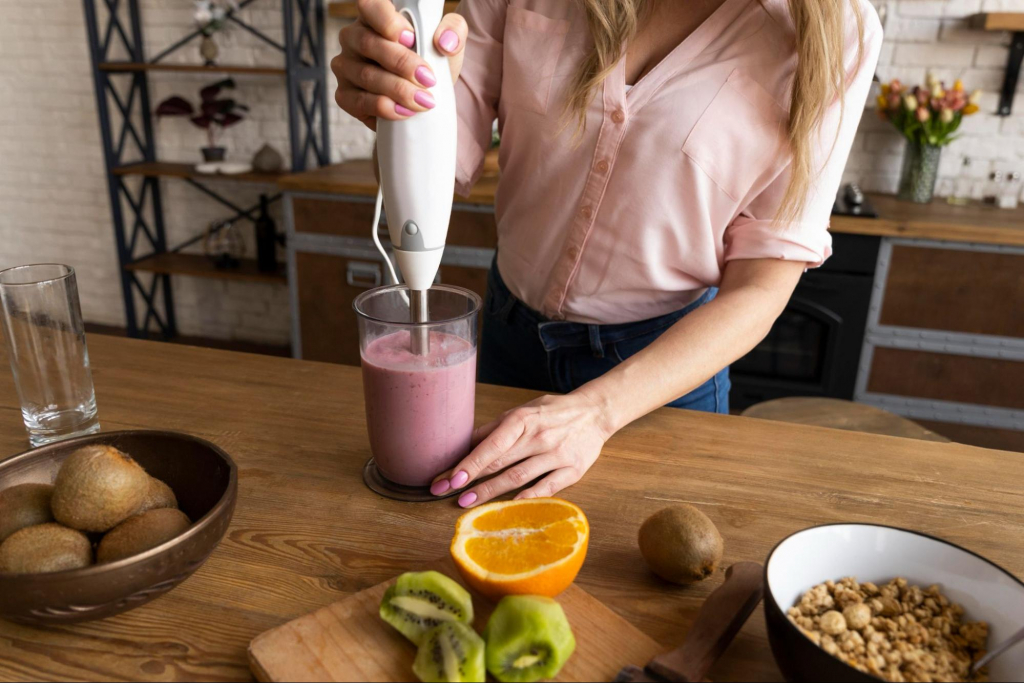
Immersion blenders, also called hand or stick blenders, are hand-held tools designed for blending directly in the pot, bowl, or pitcher. Immersion blenders are great for blending soups, sauces, and baby food right where they’re cooked, eliminating the need to transfer hot liquids to a countertop blender. Because you can move them around freely, they handle thicker textures with ease and give you more control over consistency.
These versatile tools are great for small batch tasks like making salad dressing, mayonnaise, or frothy coffee drinks. While immersion blenders aren’t as powerful as traditional blenders, they’re extremely convenient, lightweight, and easy to store. They may not replace a full-size blender, but they make an excellent companion for everyday kitchen use.
Price Range
$20–$150
Features To Expect
Detachable blending shafts, stainless steel blades, variable speed settings, and optional accessories (like whisks or mini choppers).
High-Performance Blenders

High-performance blenders are the heavy-duty models designed for serious home cooks and frequent users. They come with powerful motors (often exceeding 1000 watts) that are capable of tackling the toughest ingredients like nuts, seeds, frozen fruit, and fibrous vegetables.
These blenders can easily handle nut butters, purées, hot soups (some even heat ingredients through friction), and professional-quality smoothies. High-performance blenders are built to last, and usually come with premium features and longer warranties, which also mean higher prices.
Price Range
$300–$700+
Features To Expect
High-power motors (usually 1000W+), multiple speed options, tamper tools, large-capacity pitchers, preset programs, and heat-resistant or self-cleaning containers.
Specialty or Multi-Function Blenders
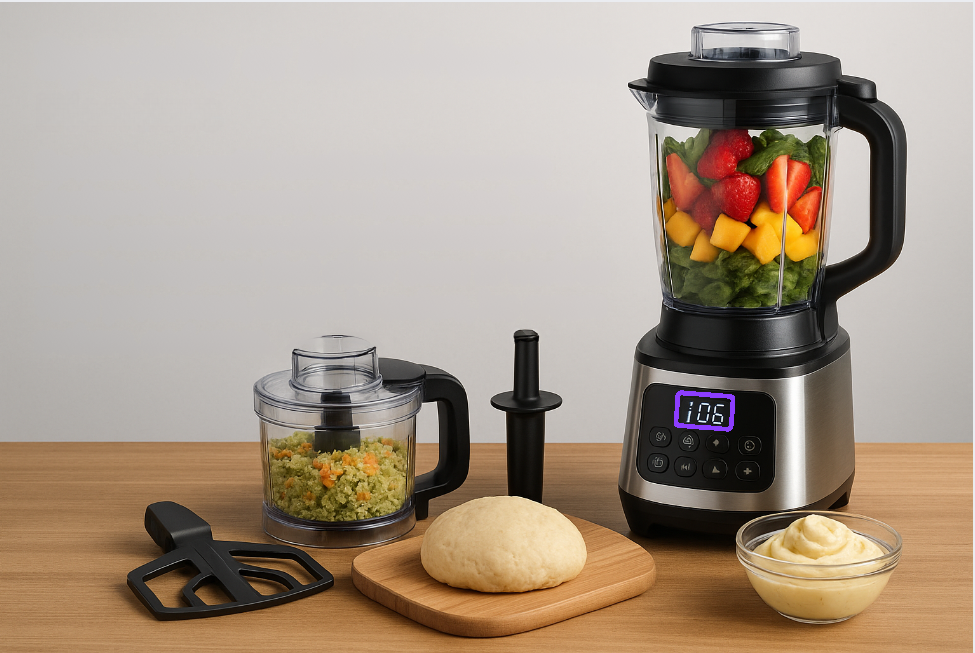
Specialty or multi-function blenders are designed to do more than just blend. They often come with multiple attachments or built-in programs that allow them to work as food processors, dough kneaders, ice cream makers, and more.
Multi-function blenders are ideal for those who want a single, space-saving appliance that can replace several others. While convenient, these models can be more complex to clean and some attachments may not perform as well as dedicated standalone tools.
Price Range
$100–$400+
Features To Expect
Multiple blending modes, food processing attachments, dough or ice cream functions, and heating or steaming options.
Vacuum Blenders (Reduce Oxidation)
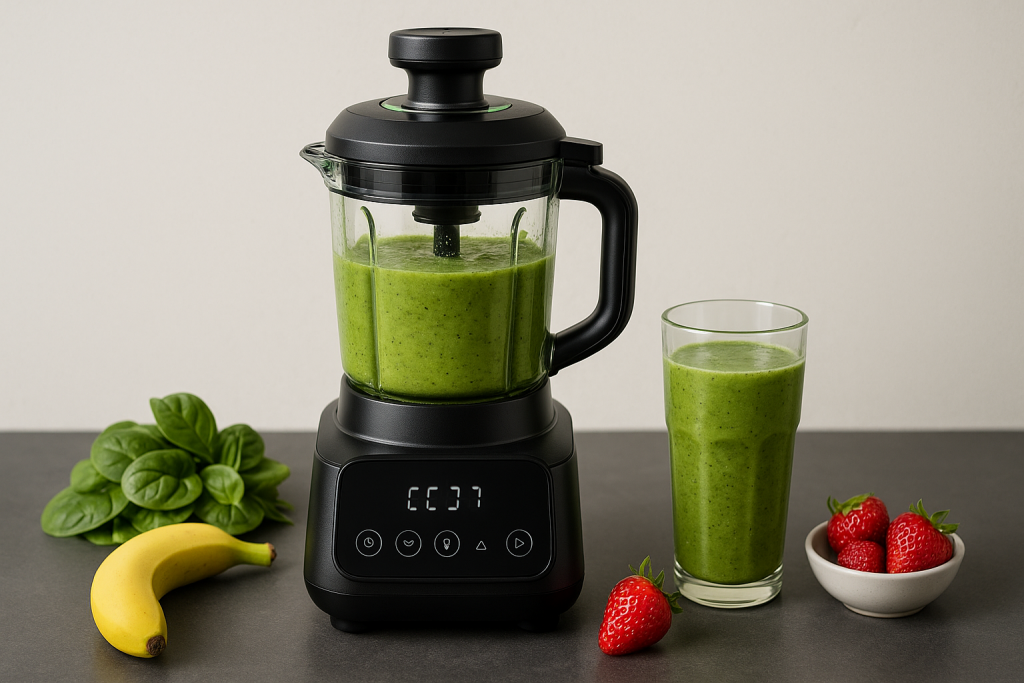
Vacuum blenders work by removing air from the blending jar before the blades start spinning. This process reduces oxidation, helping retain nutrients, color, and flavor. The result is a smoother, longer-lasting smoothie that doesn’t brown or separate as quickly.
They’re a smart choice for people who prepare their drinks in advance or want to preserve freshness and visual appeal. While vacuum blenders cost more and take slightly longer to operate, the improvement in taste and texture can be worth it for health-conscious users.
Price Range
$150–$600+
Features To Expect
Built-in vacuum pump, airtight blending container, preset blending programs, and sometimes app connectivity for recipe tracking.
Blender/Food Processor Combos

Blender/food processor combos combine the blending power of a traditional blender with the chopping and slicing properties of a food processor. They include interchangeable blades, jars, and attachments that let you blend liquids or chop and slice solid ingredients. This makes them ideal for people with small kitchens or for cooks who like meal prepping and batch cooking.
Like multi-function blenders, you can switch from making smoothies, grating cheese, kneading dough, or chopping vegetables without needing multiple machines. However, these combos are bulkier and can take a bit more time to clean and reassemble between uses.
Price Range
$150–$400
Features To Expect
Interchangeable blades and bowls, slicing and grating attachments, dough tools, and variable speed or pulse settings.
Smart Blenders With Preset Programs

Smart blenders bring automation and connectivity to your kitchen. They come with built-in preset programs for things like smoothies, hot soups, ice crushing or self-cleaning. Smart blenders are ideal for people who love convenience and efficiency – just press a button and let the blender take care of the rest. Some models connect to mobile apps that can track nutrition, suggest new recipes, and control the blender remotely.
Price Range
$100–$600+
Features To Expect
Preset programs for different recipes, digital displays, app or touch control, and smart home compatibility.
Quick Comparison Table
How to Choose the Right Type of Blender for Your Needs
With so many types of blenders available, the best choice really depends on your needs, budget and cooking habits. To find the right fit, start by asking yourself a few key questions.
- What will you blend most often?
If you mostly make smoothies or protein shakes, a personal blender is the best option, while a high-performance blender is better if you want to be able to blend tough ingredients and obtain more consistent results.
- How much space do you have?
Countertop blenders and combo models deliver excellent blending power but take up more room. If your kitchen space is limited, a personal or immersion blender is easier to store in a cabinet or drawer without sacrificing everyday functionality.
- Do you need it to travel or stay on the counter?
If you plan to blend on the go, personal blenders with to-go cups or immersion blenders that fit in a travel bag are your best bet. For home cooks who blend larger quantities, a countertop or multi-function blender is better suited for stationary use.
- What’s your budget?
Setting a clear budget helps narrow your options quickly. Affordable personal and immersion blenders handle light tasks well, while high-performance and smart blenders deliver premium features and durability at a higher price point.


